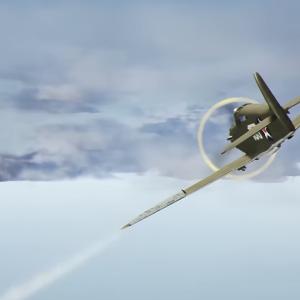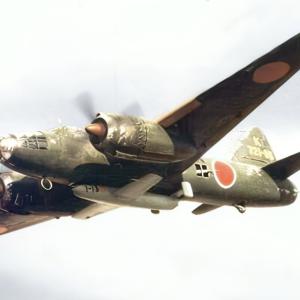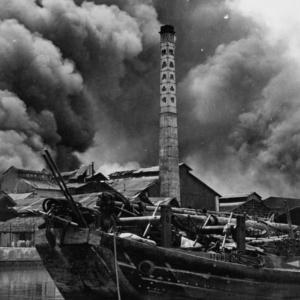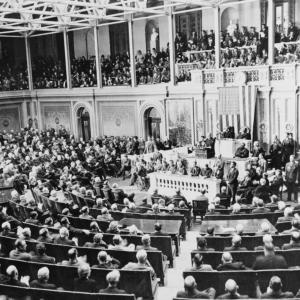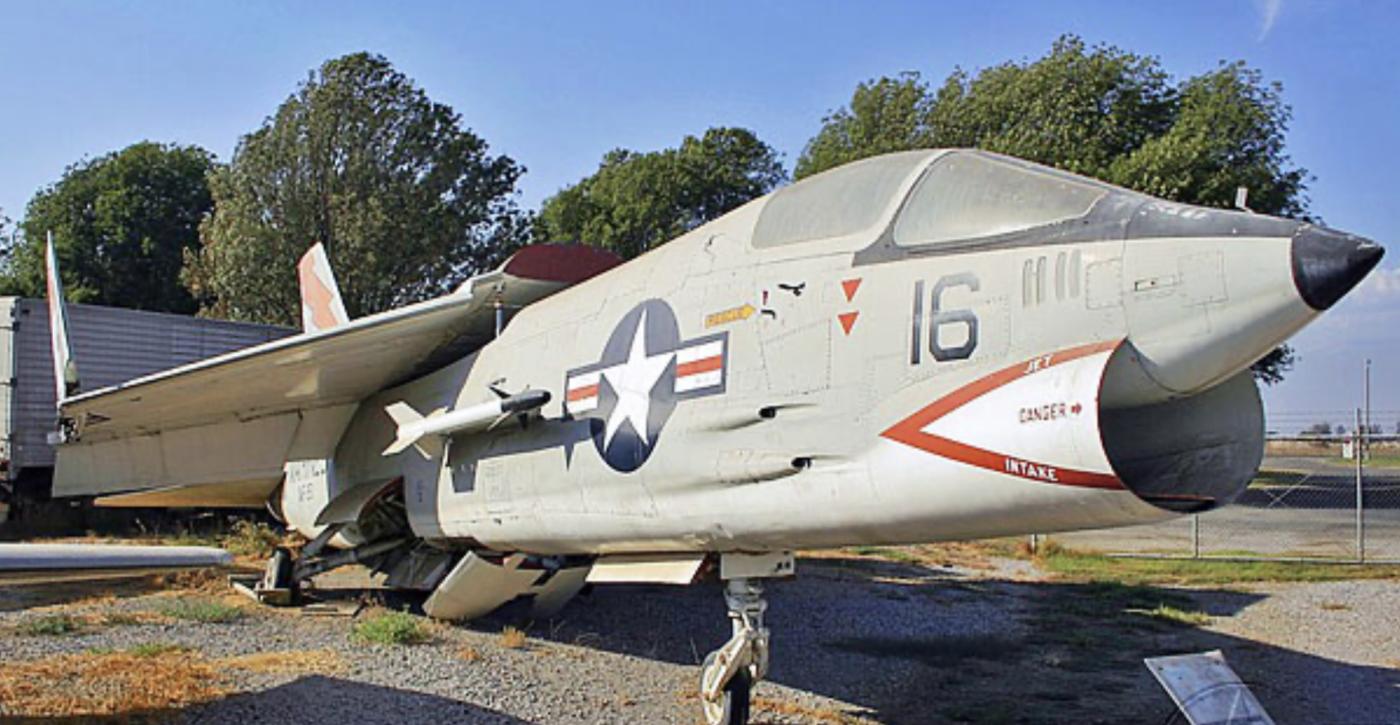
F-8 fighter plane
The Vought F-8 Crusader was a single-seat, carrier-based fighter aircraft that served as a mainstay of the United States Navy and Marine Corps from the late 1950s through the 1970s. Introduced at a time when supersonic speed and missile technology were rapidly reshaping aerial combat, the Crusader stood out by maintaining a strong reliance on guns, earning it the nickname "The Last of the Gunfighters." While most contemporary fighters were transitioning to missile-only armament, the F-8 retained four 20 mm Colt cannons, which gave it a critical edge in close-range dogfighting, particularly during the Vietnam War.
Designed by Vought, the F-8 first flew in 1955 and entered service in 1957. Its defining aerodynamic feature was a high-mounted variable-incidence wing, which could be raised independently of the fuselage. This allowed the aircraft to maintain a high angle of attack during takeoff and landing while keeping the fuselage level, greatly improving the pilot’s visibility and making the Crusader well-suited for carrier operations. Powered by a single Pratt & Whitney J57 afterburning turbojet, the aircraft could exceed Mach 1.8 in level flight, making it one of the fastest fighters of its era.
The Crusader saw extensive combat in Vietnam, where it proved agile and effective in air-to-air engagements. Its pilots often reported favorably on the aircraft’s handling characteristics and acceleration, which allowed them to compete effectively against nimble enemy fighters such as the MiG-17 and MiG-21. The aircraft was also adapted for photo-reconnaissance missions in the form of the RF-8 variant, which played a crucial role during the Cuban Missile Crisis by providing high-resolution images of Soviet missile sites in Cuba. These unarmed versions remained in service well into the 1980s, long after the fighter versions had been retired from frontline duty.
In addition to its service with American forces, the F-8 Crusader was exported to France, where it flew from the French Navy's aircraft carriers until the turn of the century. These late-service Crusaders were upgraded with improved avionics and remained in use until replaced by the Dassault Rafale M in 2000. Despite being overshadowed in later years by more advanced aircraft such as the F-4 Phantom II and F-14 Tomcat, the F-8 Crusader remains a respected and iconic aircraft. Its blend of speed, agility, and powerful armament made it a formidable fighter during a critical transitional era in naval aviation history.

